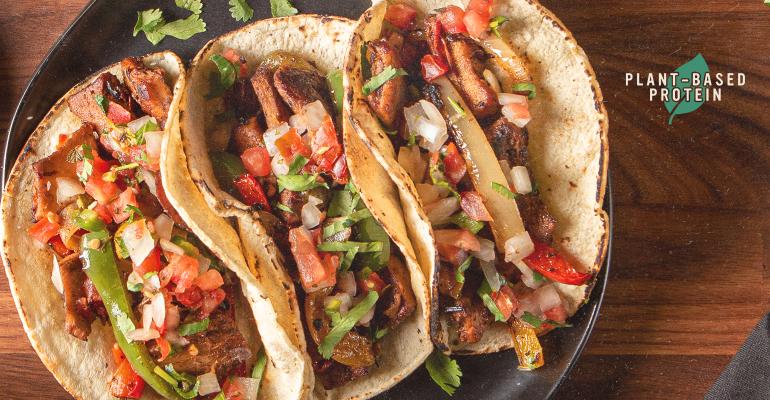Sponsored by Nestlé Professional Sweet Earth
Vegetarian and especially vegan diets have traditionally been associated with niche markets for much of the foodservice industry. Not anymore, especially now with growing demand for plant-forward, a.k.a. flexitarian, menu offerings. That shift to greater mainstream consumption of fruits and vegetables, grains, nuts, seeds, and other plants has created a wave of delicious and satisfying nonmeat specialties. It’s also spurred interest in plant sources of protein, including meat alternatives.
It’s all part of an overall uptick in healthy, cleaner eating that is taking place. And Datassential numbers tell the story:
- Vegetarian is on 37.7% of U.S. menus, with four-year growth of 6.5%
- Vegan is on 17.6% of U.S. menus, with four-year growth of 107.7%
- Plant-based is on 3.5% of U.S. menus, with four-year growth of 3,298.6%
Plant proteins such as soy (tofu, tempeh, and edamame), lentils and chickpeas, nuts, nutritious grains including quinoa, hemp and chia seeds, and protein-rich vegetables (kale, broccoli, mushrooms) play a big role in this menu-item growth. But the real news is in such meat alternatives as plant-based burgers, crumbles, sausage, chicken, and seafood, as well as plant-based alt-dairy products such as vegan cheese and nut milks.
Increasing availability of ready-to-menu meat alternatives have been a game changer for operators who don’t have the inclination or resources to create their plant-based alternatives—such as black bean “veggie burgers”—and for customers who want to decrease their consumption of animal proteins without giving up on the satisfaction of biting into a big juicy burger or a slice of “sausage” pizza.
If anything, the coronavirus pandemic and attendant health concerns has given a boost to plant-based meat alternatives. According to Revenue Management Systems (RMS), nearly 30% of respondents reported trying an alt-meat for the first time last year, for reasons of environment and flavor, as well as health.
In addition, while consumers are also buying more plant-based meats to prepare at home—especially burgers and in ground form—foodservice operators can definitely drive the trend. In fact, says RMS, 47% of respondents who have eaten plant-based meats more than once feel it is easy to find plant-based meats at restaurants; 58% are more likely to visit a restaurant that offers plant-based meats; and 51% are more likely to switch to another restaurant brand if it offered plant-based meats.
Millennials in urban settings with $100K of household income are the prime target here. RMS data revealed the following about this influential cohort:
- 71% eat plant-based meats because they believe it is better for the environment
- 63% enjoy the taste of plant-based meats
- 61% believe it is healthier than regular meat
- 49% are willing to pay more for plant-based meats, but 53% still believe they are too expensive
- 49% have eaten plant-based meats for over 12 months
- 39% eat plant-based meats weekly
Families with kids are another robust market for alt-meats, with 43% of family households having tried plant-based meats vs 36% of single households.
Clearly, operators have an opportunity to grow market share by creating more awareness of plant-based meats. This includes sourcing high-quality, great-tasting products and using them in recipes with the same attention to flavor principles as their animal-protein counterparts.
Sources: Datassential SNAP! Vegetarian (2021); Datassential SNAP! Vegan (2021); Datassential SNAP! Plant-based (2021); Revenue Management Systems, Restaurant Consumer Report, Q3 Update (2020)

